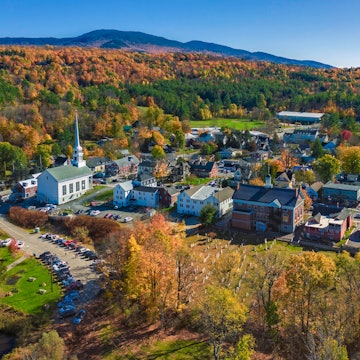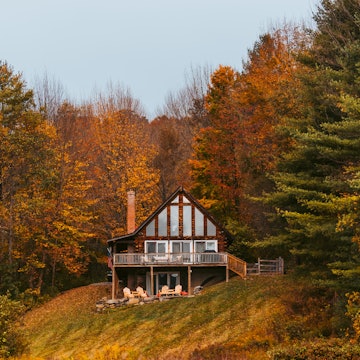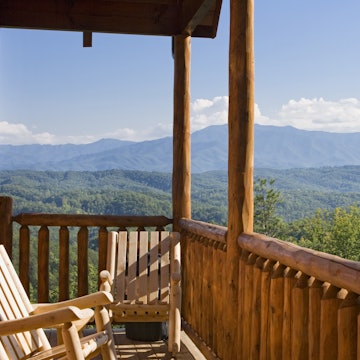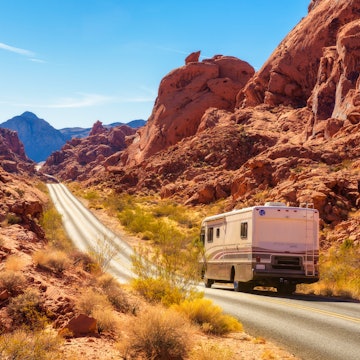

Wyoming was made for hikers, whether you’re searching for family fun or places to put your backcountry skills to the test. aaronj9 / Shutterstock
Sprawling landscapes, winding rivers, swathes of desert, towering mountain ranges and incredible national parks – the great state of Wyoming is truly a gift to hikers. Trails covering thousands of miles and every kind of natural landscape mean there's a perfect hike for every ability.
Whether you’re searching for family fun or want to go off the grid in the backcountry, look no further. There are wilderness areas across the Equality State, and you'll most likely have the whole trail to yourself. Here are the best hikes in Wyoming.
1. Teton Crest Trail
Most challenging hike
40 miles; 4–7 days one way; difficult to strenuous
A meandering 40-mile trek across the lofty spine of the Tetons, this trail isn’t for the faint of heart, climbing 3775ft to reach a high point of 10,645ft, and with jaw-dropping views of alpine lakes and at least three ecological zones.
The dangers are many – grizzly bears, altitude sickness and exposure to thunder and lightning, to name a few – so planning for your safety is paramount. Ensure you have all the appropriate gear, including proper documentation and permits for Grand Teton National Park and a bear bag or canister. Once everything’s in place, the trail offers views of the Tetons many don’t see: a remote and wild place only your feet can take you to.

2. Red Beds Trail
Best hike for all ages
2.8 miles; 2–4 hours roundtrip (loop); easy
A trip to Wyoming isn’t complete without a visit to Devil's Tower, the dramatic geologic uplift that became the country's first national monument in 1906 and continues to draw visitors from around the world.
Paths like the Red Beds Trail offer a chance to get away from the crowds and view the tower – just be sure to keep one eye on your footing. With sections of flat and gravel for kids as well as steep climbs with rocky steps for experienced hikers, the sometimes hot and usually windy trail is a good mix. Starting off at the visitor center and looping back to the parking lot, the hike should take no more than half a day.
Planning tip: the views from the south side are the best, so start your trip in a counterclockwise direction to get there first.
4. Medicine Bow Peak via Lakes Trail Loop
Best high-altitude hike
6.7 miles; 3–6 hours roundtrip (loop); difficult to strenuous
Situated in the Snowy Range of southeastern Wyoming, the Lakes Trail Loop offers alpine vistas and technical hiking around granite boulders, en route to Medicine Bow Peak at 12,018ft. Whether you want to tackle the summit in a day or backpack to one of the meadow-filled sites beneath the summit to camp for the night, the trail is worthy of both endeavors.
As it’s a loop, the preferred method of travel is clockwise, for better views of the landscape on the way down from the peak. Though not required, trekking or hiking poles are recommended – the return is steep, and many of the boulders are quite large and difficult to hike over (not to worry, the breathtaking views are worth it).
5. Lost Twin Lakes
Most rewarding hike
13.4 miles; 7–12 hours roundtrip (out and back); difficult to strenuous
In an inviting wilderness setting, with flower-filled meadows and lakeside areas perfect for camping, the Lost Twin Lakes are an incredible sight to behold, nestled in a granite cirque (an amphitheater formed by erosion) – but they'll make you work to get there.
The hike from the car is nothing short of strenuous, thanks to long elevation gains on a steep, technical trail, plus mixed foot placements, downed trees and switchbacks. Though the trek will put your skills and willpower to the test, the pika squeaking in the meadows along the trail are there to cheer you on.
Backpack in for the night, or wake up early to tackle it as a day hike. The deep blue tint of the lower lake will entice you to explore the cascading creek to the upper lake, reflecting the alpine glow of the surrounding peaks.
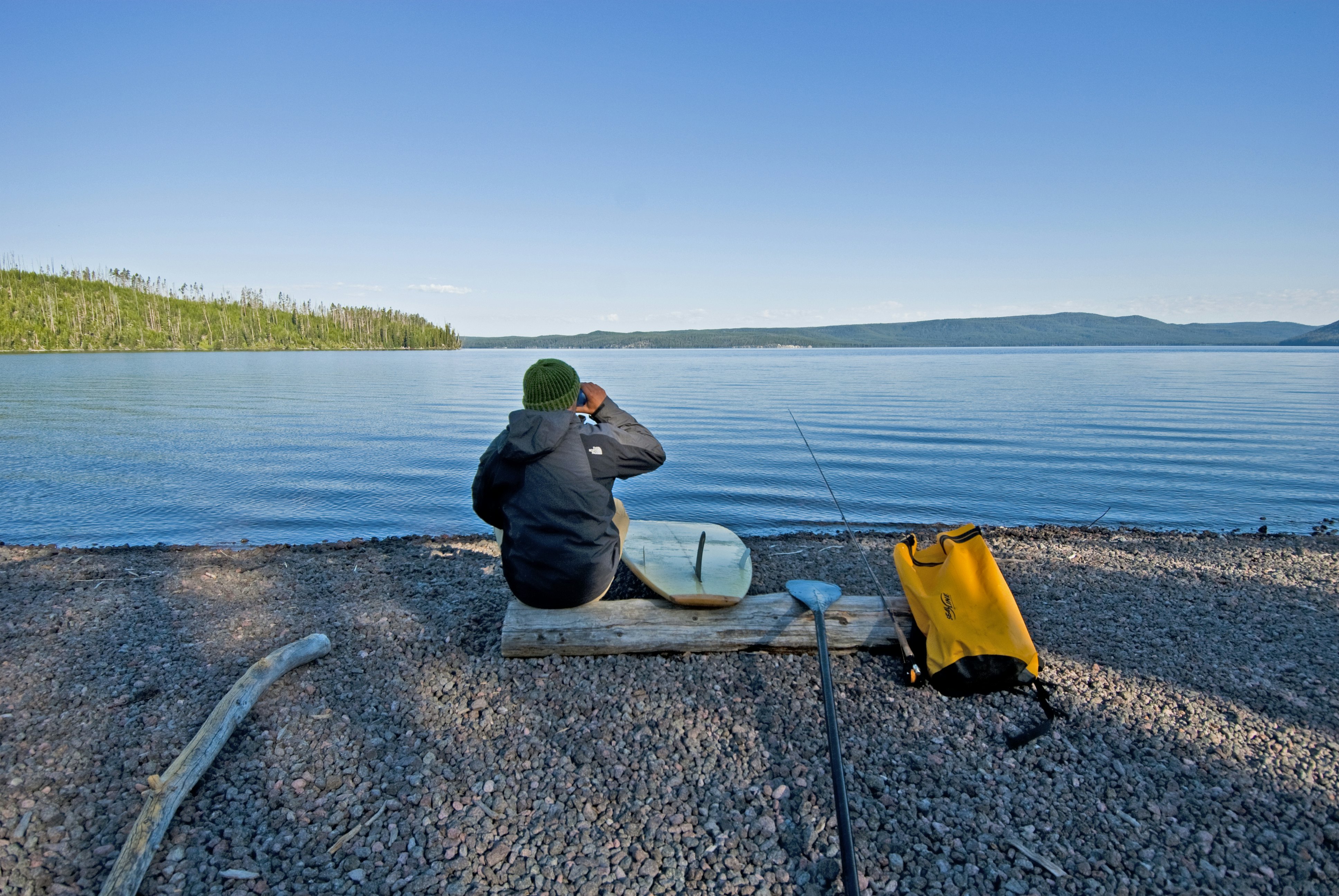
6. Shoshone Lake via DeLacy Creek Trail
Best hike for a relaxing experience
6.1 miles; 2–5 hours roundtrip (out and back); easy to moderate
With more than a thousand miles of trails to choose from within Yellowstone National Park, deciding which to hike can be overwhelming, but DeLacy Creek Trail leading to Shoshone Lake is one to circle on the map. Shoshone is the largest backcountry lake in North America, meaning this wild swath of Wyoming landscape will be yours for exploring – and an easy, solitary hike on this 6.1-mile out-and-back trail will make you forget you’re barely a stone’s throw from the crowds at Old Faithful.
DeLacy is entirely in the tree line, so warm summer days are a great time to hike to this high-altitude lake, as the all-day shade makes it pleasant and easy – even uphill back to the car. The trail is also a good jumping-off point to connect to other trails, including the 3100-mile-long Continental Divide Trail.
7. Bunsen Peak
Best hike for viewing wildlife
4.6 miles; 1–3 hours roundtrip (out and back); moderate
While the southern portion of Yellowstone National Park reigns supreme as the hub for most park visitors, the northern section of the park has been dubbed the Serengeti of North America, and up here it’s relatively quiet. Patient hikers will find a dose of solitude and more opportunities for spotting wildlife, like bison, elk and maybe even the occasional wolf.
Bunsen Peak is an exceptionally rewarding hike, right in the heart of the “Serengeti.” The trek can be strenuous, with 1300ft of elevation gain in two miles, but the views of the vastness of Yellowstone are worth every foot climbed. From the car to the summit, you can see bison and elk foraging in the meadows below; keep an eye to the skies for the occasional sandhill crane, and if you’re lucky, you might spot a bear rummaging for food.
Daytime temperatures spike into the 80°F and 90°F range in summer, so hiking in the early morning or late afternoon is paramount. Bring water, as none is available on the trek, and always carry bear spray.
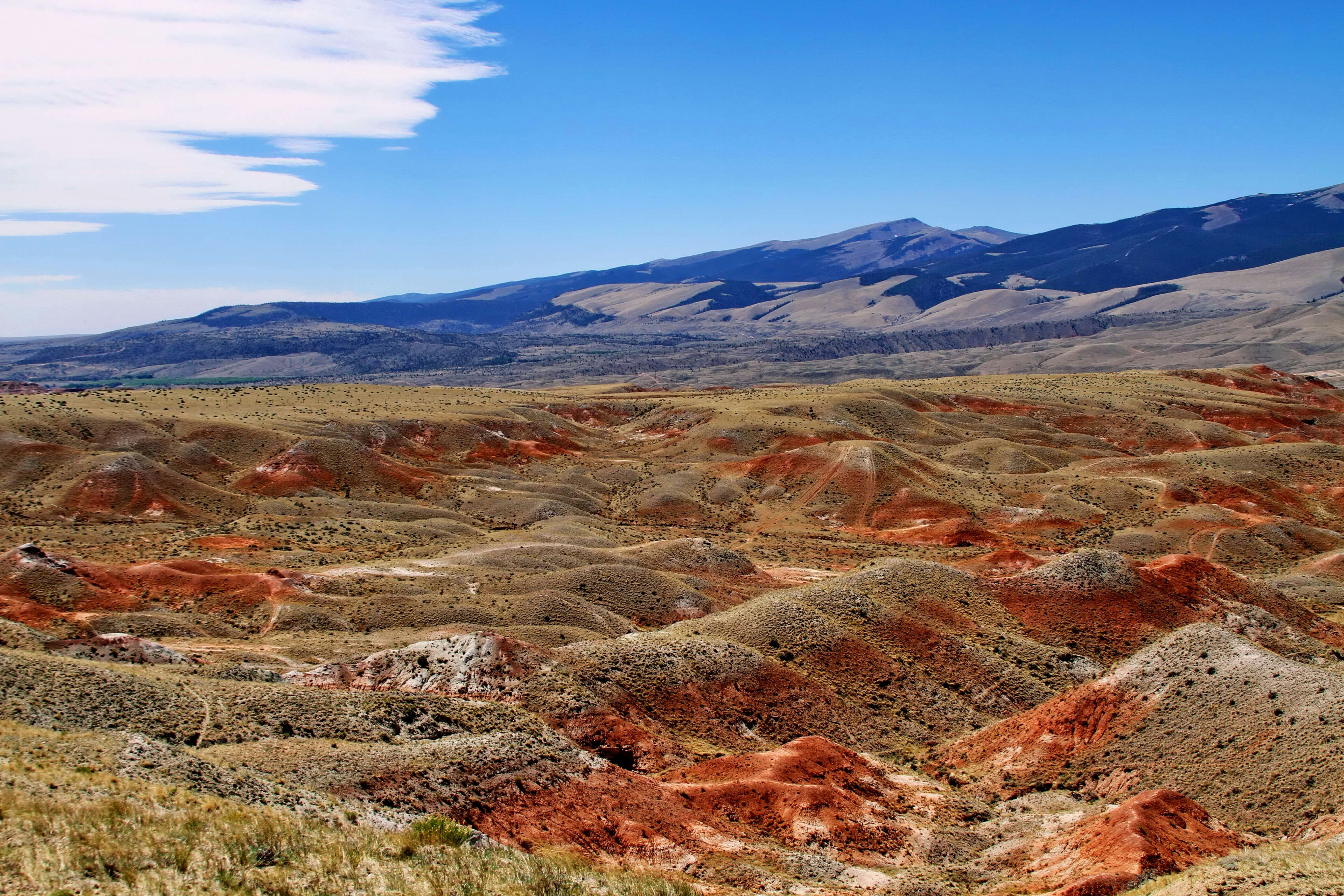
8.Dubois Badlands Trail
Best hike for quiet surroundings
3.8 miles; 2–5 hours roundtrip (loop); easy to moderate
In a quiet corner of Wyoming overseen by the Bureau of Land Management, the Dubois Badlands remain as socially distanced as anyone could wish, and its deep canyons and wild temperature swings make it a unique hiking destination, considered by many to rival the canyonland scenery of Utah.
A dry and barren landscape, the Dubois Badlands Trail features red-colored canyons with glimpses of snowcapped mountains in the background. It's best hiked in spring, fall or very early morning, as summertime brings oven-like temperatures. Bring water and sun protection, as the heat is relentless – but the coyote tracks and the chance at spotting a bighorn sheep make it worth each drop of sweat.
9. Crow Creek Trail to Hidden Falls
Best family hike
3.6 miles; 1-3 hours roundtrip (out and back); easy
In the dry, hot depths of southern Wyoming, the Crow Creek Trail of Curt Gowdy State Park is a welcoming sign to stretch the legs and cool the soul. Straightforward and well-marked, it’s an epic place to beat the summer heat – a shady trail that ends in a small canyon, with waterfalls cascading down the granite walls.
Bring the dog and family and enjoy the refreshing waters of Middle Crow Creek. There's plenty to take your breath away on this hike: the relatively high altitude of 7214ft, the bracingly cold water after a plunge, and the views of rolling hills and granite canyons. The trail should only take a fraction of the day, so it's a great place to spend an afternoon fishing or setting up camp.









